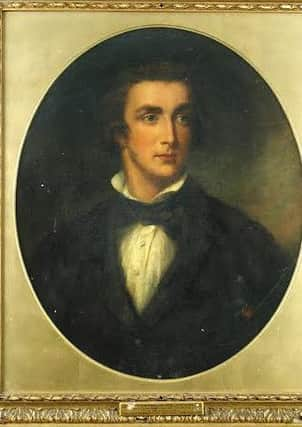VC hero portrait goes under hammer


Captain Sir William Peel’s short life, he died at the age of 34, reads like a Boys Own adventure.
The third son of Prime Minister Sir Robert Peel, Sir William was involved in the Crimean War, was badly wounded in the Battle of Inkerman, came home to his estates in Sandy where he built the Sandy to Potton railway, was wounded at the Relief of Lucknow in India in 1857 before succumbing to smallpox in 1858.
Advertisement
Hide AdAdvertisement
Hide AdSir William was born in 1824 and was a British naval officer and recipient of the Victoria Cross, effectively three times over, in the Crimean War. Like his father hewent to Harrow and then entered the Navy at the age of 14.
He was a Commander of the Naval Brigade in the Crimean War and in 1854 at the Siege of Sebastopol, he and his Brigade were charged with the task of supplying ammunition to the artillery when a Russian shell, fuse still alight, landed among them and their explosives. Whilst others ran, Peel picked up the shell and threw it over the parapet. The shell burst as it left his hands.
A month later at the Battle of Inkerman, Peel noticed a platoon was in grave danger of being cut off and surrounded by Russian forces. He braved a heavy barrage to lead the platoon to safety. In the following year, Peel led his troops over a ridge putting himself in the line of fire. He was shot and seriously injured. He was awarded the Victoria Cross for all of these immense acts of bravery, one of the earliest officers to be awarded the Victoria Cross during the Crimean War.
Sir William had estates in Sandy, which he bought with a legacy from his father’s death in 185. He lived at The Lodge on the outskirts of Sandy; where he decided to build the Sandy to Potton railway in 1857. Sadly the Railway only lasted from 1857-1861; Sir William named one of the engines “Shannon” after his frigate. The locomotive “Shannon” (GWR Railway Museum) and its engine shed still survive.
Advertisement
Hide AdAdvertisement
Hide AdSir William was later sent to India and was wounded again at the Relief of Lucknow. He died in India from smallpox aged 34
There are three statues of the great Victoria Cross holder - all by William Theed the Younger - they are at the Maritime Museum (1860); Sandy Church, (1861); and at Flagstaff House in Barrackpore, India (1863). Sir William’s home is now the home of the Royal Society for the Protection of Birds.
Cheffins auctioneers will be selling the portrait in their November 30th & December 1st Fine Art sale. Its’ estimated value is around £3-5.000.